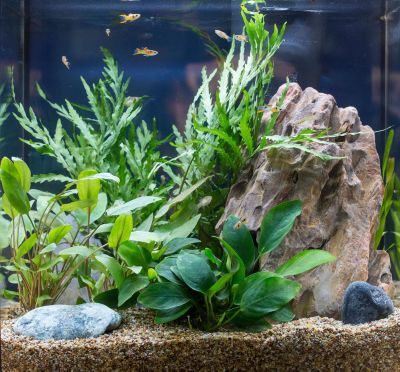Using Terrestrial Aquarium Plants
The thing about terrestrial aquarium plants is they don’t usually like to be submerged in water and end up dying. House or garden plants in an aquarium may hold their shape for a while, but eventually, they will rot and die. Another thing about land plants for aquariums is that they are often grown in greenhouses and sprayed with pesticides or insecticides, which can be harmful to your fish friends. Even so, when shopping for fish tank garden plants, you may still encounter terrestrial aquarium plants, land plants being sold for use in the aquarium. How do you spot these types of unsuitable plants? Observe the foliage. Aquatic plants don’t have a kind of waxy coating that protects them from dehydration. The leaves are thinner, lighter, and more delicate looking than land plants. Aquatic plants tend to have an airy habit with a soft stem that is agile enough to bend and sway in a current. Sometimes, they have air pockets to help the plant float. Land plants have a more rigid stem and lack air pockets. Also, if you recognize plants you’ve seen for sale as houseplants or that you have as houseplants, don’t buy them unless a reputable fish store will guarantee they are non-toxic and suitable for an aquarium. Otherwise, they won’t survive an underwater habitat and they may even poison your fish.
Unconventional Aquarium Plants
The key to incorporating most of the following fish tank garden plants is not to submerge the foliage. These plants need the foliage out of the water. The roots of land plants for aquariums can be submerged but not the foliage. There are several common houseplants that may be suitable for use in an aquarium including:
Pothos Vining philodendron Spider plants Syngonium Inch plant
Other garden plants in an aquarium that do well with “wet feet” include dracaena and peace lily.
